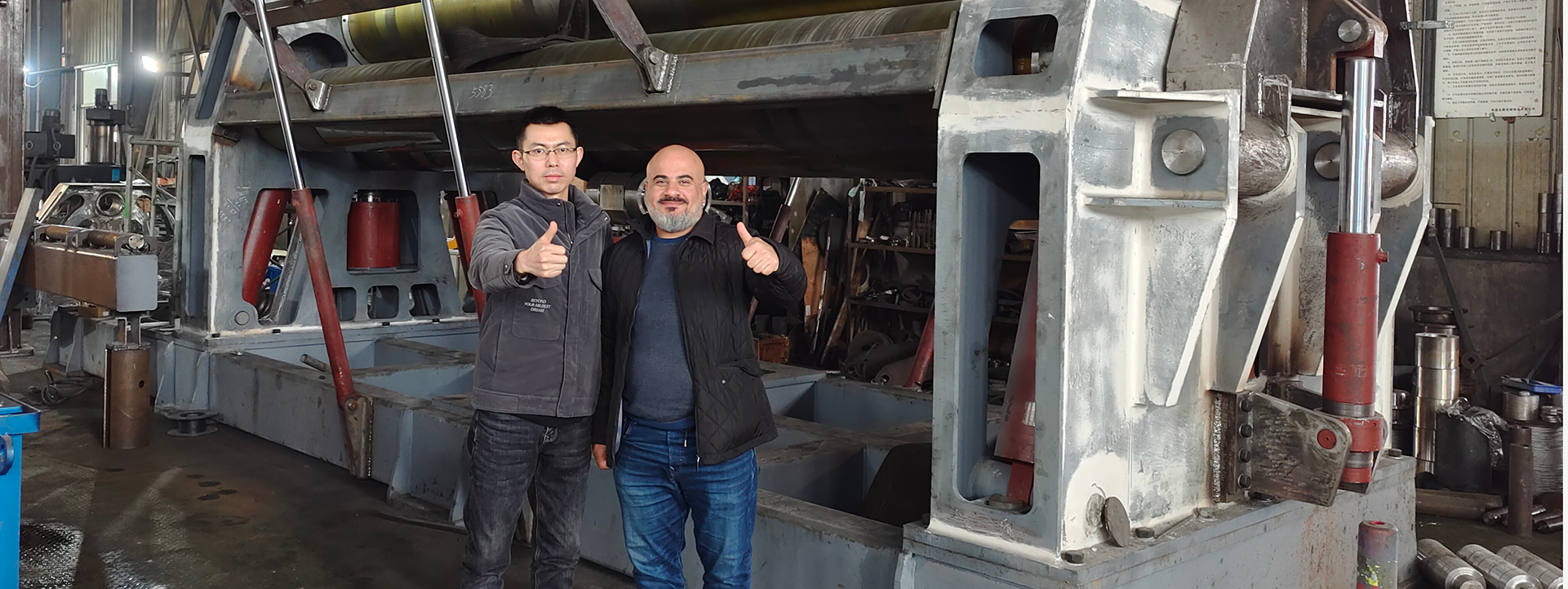Understanding Profile Bending Machines
Core Components and Working Principles
Profile bending machines are composed of several key components that facilitate the process of bending metal profiles. These components include hydraulic systems, rollers, and control panels, with each playing a significant role in the machine's operation. The hydraulic systems provide the necessary force to bend the metal, while the rollers shape the profiles by applying pressure. Control panels allow operators to set specific parameters, including bending angle and speed, thereby ensuring precision during fabrication. Understanding these elements is vital for optimizing machine performance and effectively troubleshooting issues that may arise during production.
At the core of profile bending machines is the principle of using power—either hydraulic or mechanical—to apply force on metal profiles, bending them into desired shapes. This ensures consistency and accuracy, which are crucial for industries that require precise metal fabrication, such as construction and automotive sectors. Knowledge of the machine mechanics enables operators to fine-tune processes and achieve smooth, error-free production runs.
Role in Shaping Metal Profiles with Precision
Profile bending machines play a vital role in achieving high precision in the shaping of metal profiles, essential for industries like construction and automotive manufacturing. Through meticulous control of factors such as temperature and pressure, manufacturers can minimize imperfections, ensuring that dimensions are exact and consistent. This precision directly impacts the quality and reliability of the final product, which is critical in applications where structural integrity is paramount.
Incorporating advanced technology and automation systems, profile bending machines are capable of handling complex geometries with ease. This integration allows the machines to meet stringent quality requirements, making them indispensable in modern manufacturing processes. With automation, these machines facilitate the handling of challenging shapes while maintaining high productivity and quality standards, thus serving as essential tools for industry professionals.
Types of Profile Bending Machines
Manual vs. Hydraulic vs. CNC Models
Profile bending machines come in various models, each suited for different needs. Manual profile bending machines are simple and cost-effective, ideal for small-scale projects where high precision is not essential. They are easy to operate, requiring basic skills and offering flexibility for minor adjustments. Hydraulic models, however, are geared towards larger production runs due to their ability to apply hydraulic force for high-precision bends. These machines ensure consistency and are excellent for handling large volumes efficiently. Meanwhile, CNC (Computer Numerical Control) models provide advanced capabilities in programming and automation, enabling complex shapes to be formed automatically with increased efficiency and consistency.
Key Differences Between Rotary and Roll Bending
Understanding the differences between rotary and roll bending is crucial for selecting the appropriate machine for a specific task. Rotary bending entails rotating the workpiece while applying force, making it ideal for achieving sharp bends in thinner materials. This process is often preferred for projects requiring intricate detailing and high precision. In contrast, roll bending involves using rollers to create gradual curves, commonly employed in forming cylindrical shapes or larger profiles. This method is beneficial for projects that need smooth curves over extended lengths. The choice between rotary and roll bending ultimately depends on the project requirements, material characteristics, and desired outcomes.
Integration of CNC Plate Bending Technology
CNC plate bending technology is revolutionizing the bending process by facilitating automated adjustments based on specific design specifications. This technological advancement enhances operational flexibility, allowing quick shifts between different product designs without necessitating extensive machine modifications. Moreover, CNC systems incorporate cutting-edge features such as real-time monitoring and feedback, which substantially improve quality control and reduce operational costs. These integrations ensure that manufacturers can maintain high production standards while optimizing their processes. CNC plate bending, being part of advanced manufacturing processes, aligns with Industry 4.0 principles by offering digital connectivity and efficient management.
Applications Across Industries
Structural Steel in Construction Projects
Profile bending machines play a critical role in the fabrication of structural steel components used in a variety of construction projects, such as commercial buildings, bridges, and other infrastructure. These machines utilize precise bending capabilities to ensure that structural components adhere to stringent safety and performance standards, which are crucial in construction to prevent structural failures and optimize longevity. Industry reports indicate a significant rise in the demand for accurate steel architecture design, further driving the need for advanced bending technologies to meet these elevated standards efficiently.
Automotive Frame and Exhaust System Fabrication
In the automotive industry, profile bending machines are indispensable for fabricating frames and exhaust systems where precision is paramount to ensure peak performance and safety. The advancements in bending technology have enabled manufacturers to produce lightweight yet robust components, enhancing vehicle efficiency without compromising structural integrity. Statistics reveal a direct correlation between optimized bending techniques and reduced material costs within automotive production processes, demonstrating the financial benefits of advanced bending methods.
Custom Architectural Metalwork Solutions
Custom metalwork projects in architecture demand unique and intricate shapes, necessitating specialized bending techniques. Profile bending machines offer the versatility required to create bespoke designs, empowering architects to experiment with innovative aesthetics in their projects. Numerous case studies illustrate the ways advanced bending technology has facilitated remarkable architectural achievements through precise metal shaping, showcasing the potential for artistic and functional integration in modern architecture. These machines enable custom solutions that cater to aesthetic trends and client demands, reflecting the growing importance of personalized architectural designs.
Advantages of Modern Bending Technology
Precision Engineering with Hydraulic Press Brake Systems
Modern hydraulic press brake systems are central to precision engineering, facilitating precise bending angles and significantly reducing error margins. These systems employ high-pressure hydraulic technology to bend and shape metal sheets accurately, aligning with stringent quality requirements. For instance, a study revealed that investment in such advanced hydraulic systems results in a 30% boost in production efficiency. This efficiency not only enhances production rates but also maintains consistent product quality, ensuring that complex shapes are produced with impeccable precision.
Efficiency Gains from CNC Guillotine Shearing Integration
Incorporating CNC guillotine shearing machines with profile bending technology vastly improves operational efficiency. This combination allows automated cutting and bending processes, optimizing resource use and reducing production downtime. Experts in the field suggest that such integrated systems can decrease production cycle times by up to 40%, leading to substantial savings and increased profitability. CNC guillotine shearing machines facilitate precise and quick material cuts, which, when paired with bending machines, enhance overall manufacturing velocity and consistency.
Reduced Material Waste in Plate Rolling Operations
Advancements in profile bending technology have paved the way for reduced material waste in plate rolling operations. By optimizing the bending process, manufacturers achieve higher yields from raw materials, which leads to notable cost savings. Sustainability metrics highlight how companies leveraging advanced bending technologies report a waste reduction of approximately 25%. This not only aligns with cost-saving goals but also supports environmental sustainability initiatives, as decreasing material waste contributes to a lower carbon footprint.
Table of Contents
-
Understanding Profile Bending Machines
- Core Components and Working Principles
- Role in Shaping Metal Profiles with Precision
- Types of Profile Bending Machines
- Manual vs. Hydraulic vs. CNC Models
- Key Differences Between Rotary and Roll Bending
- Integration of CNC Plate Bending Technology
- Applications Across Industries
- Structural Steel in Construction Projects
- Automotive Frame and Exhaust System Fabrication
- Custom Architectural Metalwork Solutions
- Advantages of Modern Bending Technology
- Precision Engineering with Hydraulic Press Brake Systems
- Efficiency Gains from CNC Guillotine Shearing Integration
- Reduced Material Waste in Plate Rolling Operations




